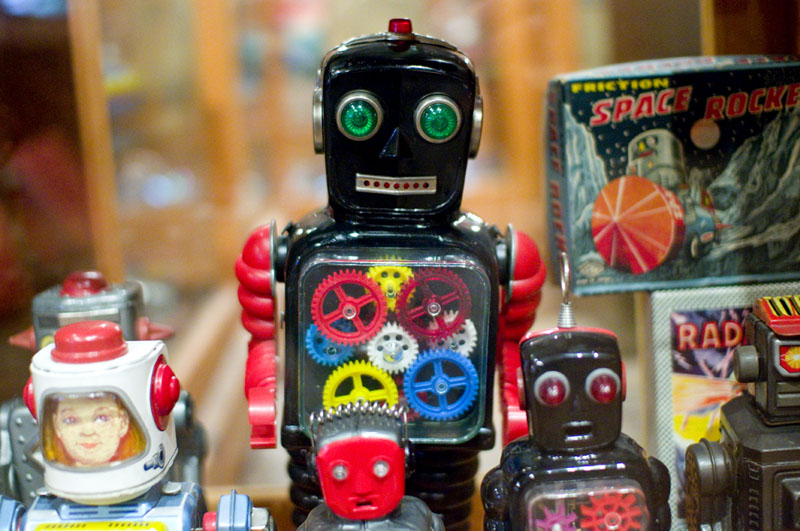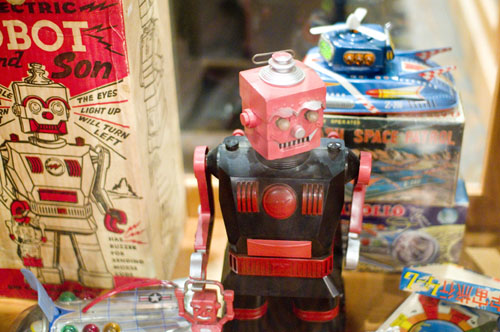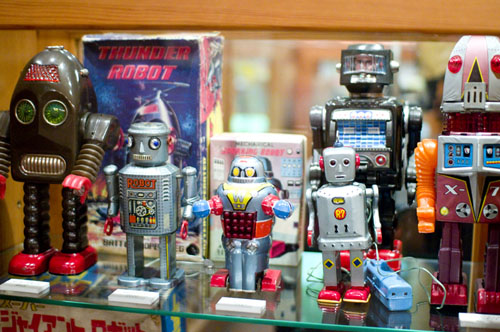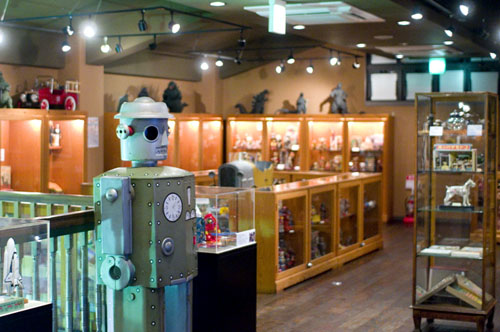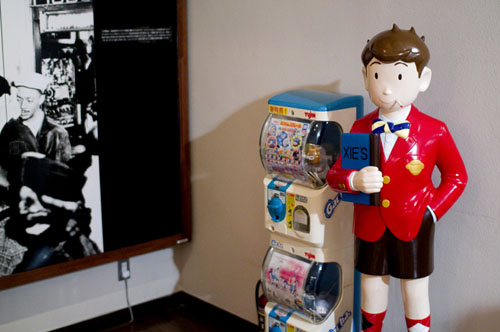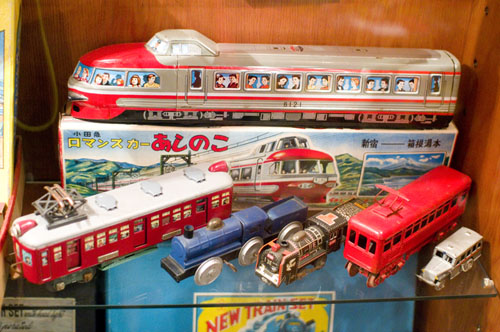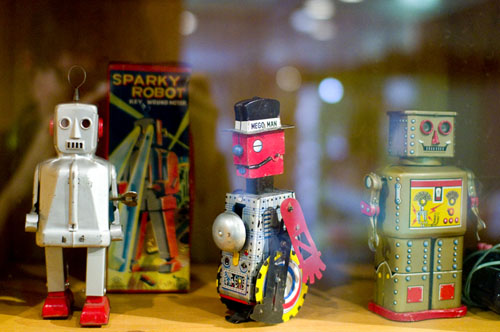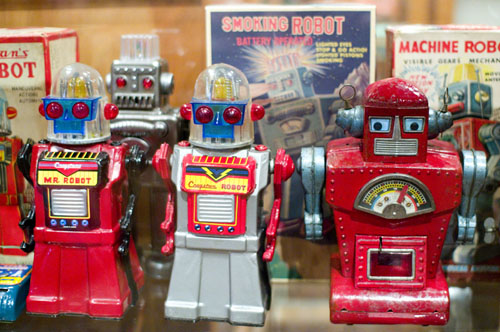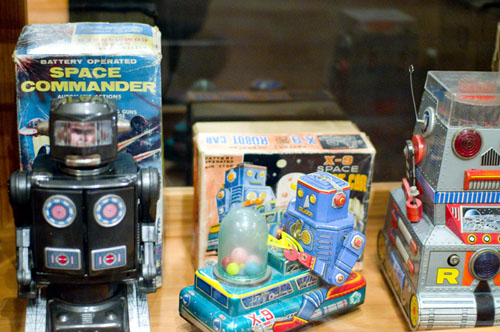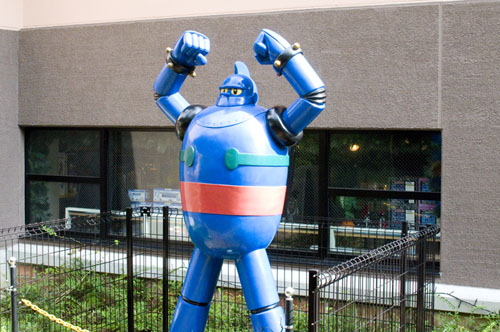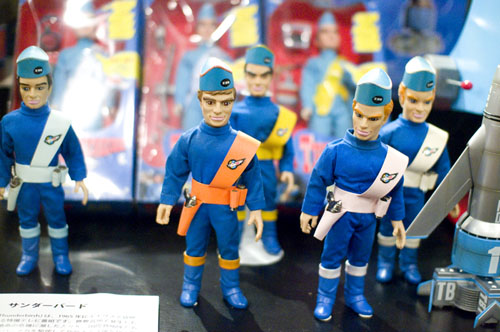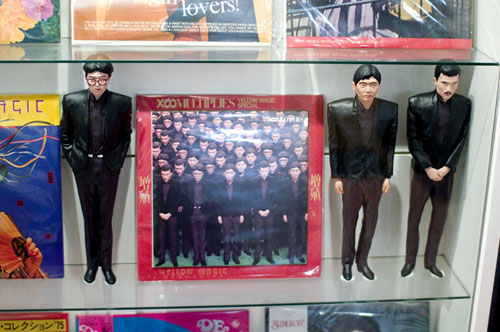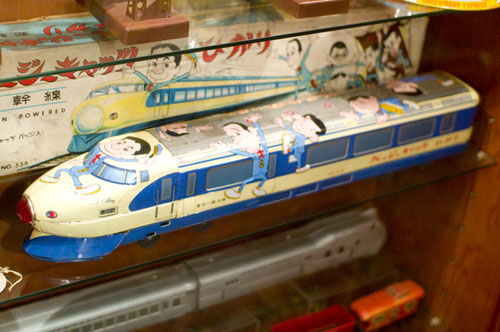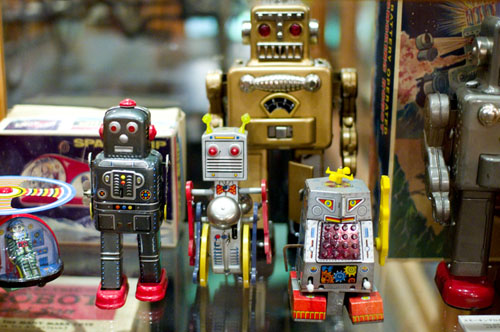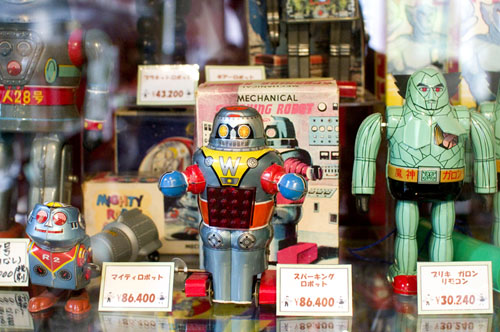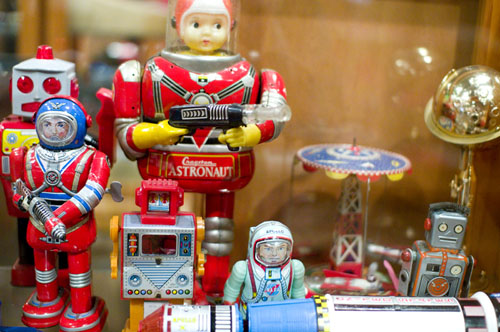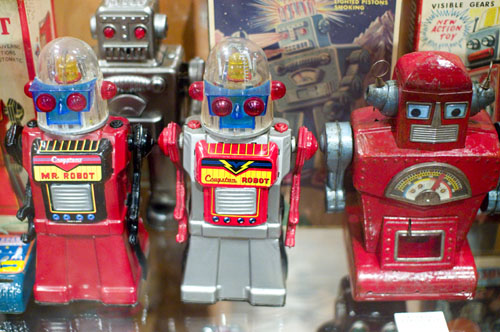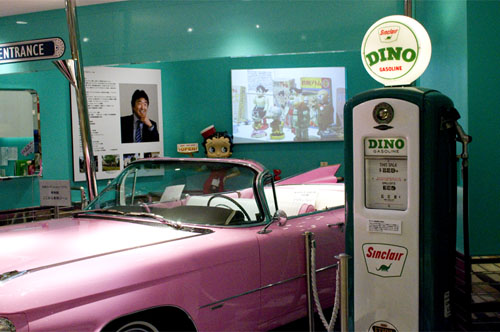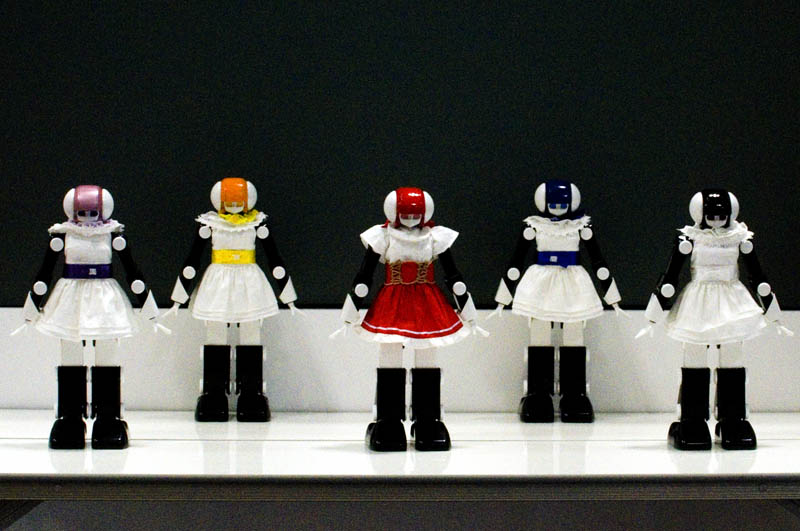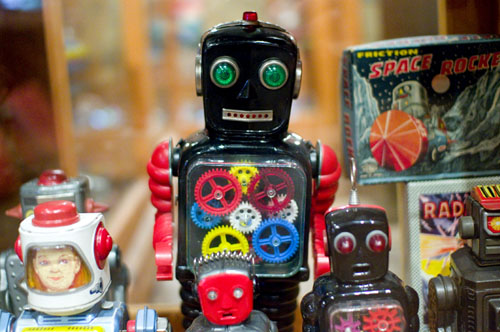The larger-than-life Tetsujin 28-GO robot standing with his fists raised in triumph tells you you've arrived at the museum of tin toys in Hakone.
Toys Wonderland holds the main collection of tin toys assembled over a span of forty years by Teruhisa Kitahara, Japan's foremost authority on the subject. The main draw at this sprawling museum is the tin-toy room, with over 3,000 items.
In one case stands a Thunder Robot (Asakusa Toy), with its weird bulbous legs and electric-shaver body, next to a Sparking "W" Robot (Noguchi) and the bizarre X-70 Robot (Nomura), whose tulip-shaped head explodes to reveal a camera swiveling around to shoot alien landscapes. Next to him is the mysterious R7 Robot (manufacturer unknown) with its wired remote control.
Our favorites were the 1960s Astronauts (Daiya), with their laser-beam guns and goldfish-bowl helmets over celluloid doll heads, like Kewpie Dolls going on a murderous rampage in outer space. The Electric Robot and Son (Marx), a skeletal robot with a fearsome grin dangling a baby robot from its pincer hands, was also pretty cool. In another case, the Spaceship Zenmai (Okayasu) with its rotor blades will make you wonder just how a helicopter would fly in a vacuum.
The collection also includes hundreds of die-cast cars, Matchbox cars, trains, trucks, planes, helicopters, zeppelins and even spaceships. Here's an early Shinkansen "Hikari" bullet train decorated with famous entertainers, The Crazy Cats, and manufactured just before the Tokyo Olympics in 1964. There's a Romance Car, the famous Odakyu train that started operating in the 1960s and still runs from Shinjuku to Hakone.
Kitahara started collecting tin toys in his twenties, and shot to fame in Japan when his collection was featured in a TV commercial that won a prize at Cannes. In the commercial, a roomful of tin toys comes to life and holds a party after their human masters have gone to bed... (So that's where the Toy Story movies got their inspiration!)
He started exhibiting his collection of over 10,000 pieces in the 1980s, and opened Toys Club in Yokohama and Toys Wonderland in Hakone. The Hakone branch is the larger of the two, and the collection here spreads out over two exhibition halls.
Collection 1 features Kitahara's toys, including robots, model cars, character figures and celluloid dolls dating from the early 1900s to the 1960s, crammed higgledy-piggledy into showcases with minimal signage or information in Japanese, let alone in English. Collection 2 is even more idiosyncratic, housing a music display room with 400 record sleeves as well as a number of large-scale mechanical tableux and another room devoted to temporary exhibits. Downstairs the museum shop sells a handful of antique toys as well as modern reproductions.
The main display in Collection 2 is a wall of single-record sleeves from the Kitahara music collection. The eclectic mix ranges from Japanese favorites like The Southern All Stars and Alfee, to Frank Sinatra, Brian Hyland, Paul McCartney and '80s boy-band The Checkers. There are even figures here too - including a cool set of all three members of the Yellow Magic Orchestra and a tin-toy band of mice gathered around a piano.
Elsewhere there a talking Michael Jordan doll, a complete set of International Rescue puppets from Thunderbirds and, next to the gumball machine, a life-size figure of a middle-school boy holding a notebook and smoking a cigarette. How cool was he in the '50s!
Note on the Japanese Tin-Toy Industry:
In Japanese, tin toys are called buriki (the word is actually a Japanese pronunciation of blik, the Dutch word for tin-plate). The Japanese tin-toy industry began after the import of European metal toys in the late nineteenth century, and within decades, Japan had become one of the world's largest manufacturers of tin toys.
After a hiatus during the Second World War, the industry flourished again, growing to sixty percent of Japanese toy exports in 1963. Alas, the lead-paint scare and the arrival of plastic toys decimated the industry in the 1970s, and now these magical toys are only produced for the nostalgic collectors' market.
Japan's biggest collection of antique tin toys at Toys Wonderland in Hakone
More articles:
Share:
Follow:
Sister sites:
Cat, rabbit and bird cafe guide
Fun things to do in the big city
Japanese cuisine and restaurant guide
Bars, retailers and festivals
Sushi dictionary and Japan Android apps
